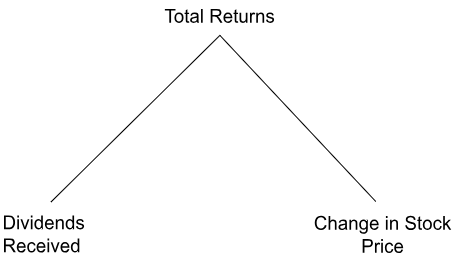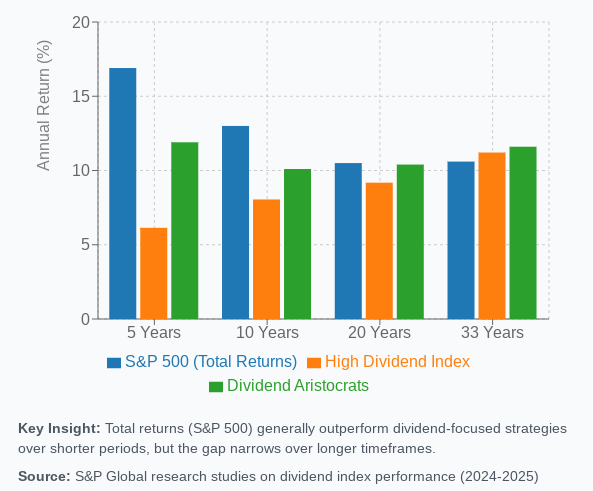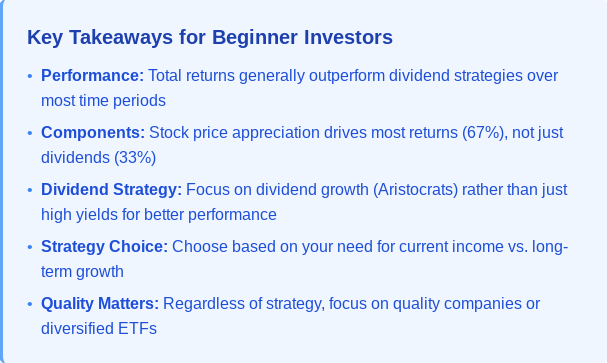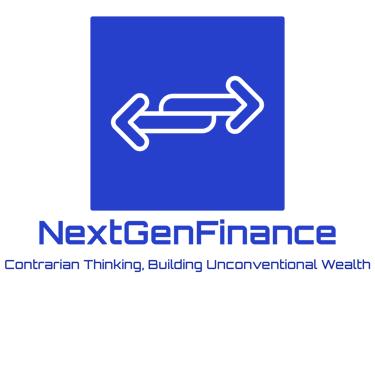Get our free Debt vs Invest Calculator — click here to access it
Dividend vs Total Return: Which Strategy Wins?
Compare dividend investing vs total return investing to see how each strategy performs and which approach may best suit your long-term financial goals.
INVESTING FOR BEGINNERS
6/24/202515 min read
Introduction
Investing in the stock market offers various approaches to building wealth, and two popular strategies often pitted against each other are dividend investing and total return investing. As you navigate your investment journey, choosing between steady income through dividends or maximizing overall returns requires careful consideration of your financial goals, time horizon, and risk tolerance. Let's dive into these two investment philosophies to help you determine which might be the better fit for your portfolio in today's market conditions.
Dividend Investing
What are Dividends?
Dividends are income paid to shareholders from a company's profits. They are paid on a regular interval (ie. quarterly, bi-annually, or annually). They are expressed as both a dollar value, and as a percentage of share price. This percentage of share price is what is known as a dividend yield.
Ex. Imagine Apple traded at $20/share, and they decided to pay out a yearly $1 dividend to each of their shareholders. This would represent a 5% dividend yield.
$1 Dividend / $ 20 Share Price = 0.05 x 100 = 5% Dividend Yield
In some cases, a company may choose instead to pay out a “special dividend” which is a one time cash payment to their shareholders.
Ex. Costco paid out a special dividend of $15/share in December 2023 after a few years of record breaking cash flow. Meanwhile, their quarterly dividend payout at the time was only $1.16/share.
A “special dividend” is often used by fiscally conservative companies that produce high cash flows. Instead of committing to a high recurring dividend, which could get them in trouble during tough financial times, they hold onto their cash. As the cash pile starts to accumulate, management may decide to reward their shareholders with extra cash payments (aka special dividend). In fact, some companies may not even have a regular recurring dividend and may just decide to introduce a “special dividend” during certain circumstances.
Dividends are only one of the many ways in which a company is able to create a return on equity for their shareholders. For example, companies may opt to re-invest their cash into growth strategies (ie. Research and Development, Expansion, Acquisitions, etc). Or they may decide to use excess cash to repurchase their own shares through a share buyback program.
What is Dividend Investing?
Dividend investing is when you decide to buy a stock based almost entirely on a company's dividend yield. This strategy is viewed as advantageous by many investors due to the regular cash payments, or passive income element.
Experienced dividend investors look specifically for companies that have a consistent track record of providing a dividend to their shareholders. They also search for companies that have demonstrated a commitment to growing their dividend over time. So much so, that the dividend community has created categories of dividend growers such as:
Dividend Achievers- 5+ years of dividend growth
Dividend Aristocrats- 25+ years of dividend growth
Dividend Kings- 50+ years of dividend growth.
However, the criteria to become a Dividend Aristocrat in Canada is much less strict at 5+ consecutive years. This is primarily due to the lack of mature companies in Canada relative to the much bigger market of the US.
Historical Performance of Dividend Stocks?
Now that you know what Dividend Stocks are, the next question becomes “are they a good investment?”. The answer to that question is unfortunately a big fat it depends…
A 2024 study by S&P Global measured the results of the S&P 500 High Dividend Index over a 33 year period. This index consists of the top 80 companies with the highest dividend yield in the S&P 500. The results of the study showed an average return of 11.21%/year which was 0.38% above the S&P 500 benchmark. However, the results were much less impressive on 5, 10, and 20 year timelines. During which time the high dividend strategy underperformed by anywhere from 1.77% (20 years) - 8.91% (5 years). This is due in part to the explosive growth of technology stocks, which historically have not paid out dividends.
Is Dividend Growth A Better Indicator of Performance?
Interestingly, if you avoided assessing dividend stocks based purely on dividend yield, but instead on dividend growth you may have experienced better results. A 2025 study by S&P Global looked at the returns of the S&P 500 Dividend Aristocrats. Remember these companies have consistently increased their dividends for at least 25 consecutive years. The results of this study showed an average return of 11.6%/year which was 1% greater than the S&P 500 benchmark. Unfortunately, this strategy still has produced suboptimal results relative to the S&P 500 over the last 5, 10, 15 & 20 year periods.
Is Dividend Investing Best Going Forward?
Unfortunately, we can’t predict where the market could go over the next 10, 20, or even 30 years. In order to estimate which strategy will outperform, we have to ask ourselves questions such as:
Will technology companies continue to make up most of the S&P 500 returns?
Will we experience an extended bear market resulting in a flight to “safety” such as dividend payers or fixed income?
Will companies decide to move away from dividends, opting for alternative strategies to optimize shareholder returns such as growth, or share buybacks?
Alternatively, will negative tax regulations make share buybacks a poor strategy of returning capital? Thereby forcing companies to revert back to dividends.
These are questions that market analysts try to predict daily. Often unsuccessfully.
Total Return Investing
What Does Total Return Mean?
When we assess the total returns of a stock, there are two primary elements to consider which are: dividends received, and stock price appreciation. The combination of these two elements is what produces the change we see in the value of our portfolios over time.
Ex. Imagine you bought Apple at $10/share, and it increased to $18/share. Meanwhile, you also received a total of $2/share in dividends over this time period. This means your total return was $10/share or 100%.
The S&P Global study mentioned above showed that over time, two-thirds of the total returns by the S&P 500 can be attributed to an increase in stock price. The remainder is the impact of reinvested dividends. The return equation looks something like this:
What is Total Return Investing?
A dividend investor would be primarily focused on one corner of this triangle (ie. dividends received). A growth investor, on the other hand, would be searching primarily for stocks that they anticipate to increase substantially in price. Therefore, they focus on the other corner of this triangle (ie. change in stock price). A total return investor seeks only the best performing companies regardless of which of the two components provides their expected return.
At this point we should add the caveat, that this is not to say that a dividend, or growth investor does not evaluate the quality of the business they invest in. Any intelligent investor should do so, and if they can’t, then they should stick to passive investing in index ETFs. However, if you overly focus on only one component of the overall return equation, you unfortunately limit your available options.
Ex. If I said that I would only invest in stocks that provide a 3% dividend yield, I would have missed out on several high performing stocks such as Nvidia, Alphabet, Apple, etc.
By choosing to be a total return investor, you’re deciding to invest in the companies you believe will produce the highest possible returns regardless of how they return capital to you (dividend or growth in share price).
Stock Picking ≠ Total Returns Investing
The performance of a total return approach to investing depends on how it is measured.
As we discussed in our blog titled “Should I Hire a Financial Advisor in Canada? Pros & Cons Explained” the research suggests that most active managers tend to underperform an index like the S&P 500. The reason is because most people make poor investment decisions such as: selling or buying at the wrong time, trading too much, or just simply buying stocks that don’t perform well over time. Financial professionals are not exempt from these flaws either.
Add to this that several studies have shown that retail investors (ie. You and I) on average underperform the market by as much as 4.6%. These poor returns compounded over time can be catastrophic to your long term wealth. Only a select few individuals such as Warren Buffet, have achieved consistent outperformance for long enough to suggest that more than luck was involved.
So if we are poor at selecting stocks, and we can’t even trust financial managers (whose job is to pick stocks) then what do we do?
The short answer is to simply just buy the S&P 500, or a Globally Diversified index fund/ETF.
Historical Performance of Total Return Approach
Referring back to the report from S&P Global, it showed that in the 33 years from January 1991 to January 2024 the S&P 500 Index Fund produced a 10.83%/ year return. This was 0.38%/year less than their S&P 500 High Dividend Index Fund.
However, what was interesting in the study is that the S&P 500 Index Fund always produced >10% returns on all measured timelines (ie. 1, 3, 5, 10, 20, 33 years). Meanwhile, the S&P 500 High Dividend Index Fund only produced >10% returns on two of the measured timelines (ie. 1 and 33 years).
Add to these mixed results that the S&P 500 experienced worst results during the tech bubble, and post Covid-19 recession. The most pronounced of which was a -44.7% return during the tech bubble. This was primarily due to the overweighting towards high growth technology stocks. The S&P 500 High Dividend Index Fund saw a 5.4% return during the same time period. This suggests that high dividend quality stocks may be more safe, and less volatile during a serious market correction.
Conclusion
The answer of which investment strategy is better depends on a variety of factors. However, these are the main take-aways:
If you liked this post be sure to check back next week where we will discuss the pros and cons of dividend investing.
Additional Posts you may like:
Disclaimer: The information discussed in this blog is not financial advice, and is meant for educational purposes only. Please consult a personal financial expert before making any financial decisions.
Citations
Costco Wholesale Corporation. (n.d.). Dividend history. Costco Investor Relations. https://investor.costco.com/stock-info/dividend-history/default.aspx
S&P Dow Jones Indices. (2023, December). S&P 500® dividend aristocrats. https://www.spglobal.com/spdji/en/documents/research/research-sp500-dividend-aristocrats.pdf
S&P Dow Jones Indices. (n.d.). The importance of dividends. https://www.spglobal.com/spdji/en/documents/education/education-the-importance-of-dividends.pdf
Macrotrends LLC. (n.d.). S&P 500 historical annual returns. https://www.macrotrends.net/2526/sp-500-historical-annual-returns
Yahoo Finance. (n.d.). S&P 500 historical data. https://finance.yahoo.com/quote/%5EGSPC/history/?period1=1136073600&period2=1388361600
Winthrop Wealth. (n.d.). The average investor underperforms due to market timing. https://winthropwealth.com/assets/The-average-investor-underperforms-due-to-market-timing.pdf






Introduction
Investing in the stock market offers various approaches to building wealth, and two popular strategies often pitted against each other are dividend investing and total return investing. As you navigate your investment journey, choosing between steady income through dividends or maximizing overall returns requires careful consideration of your financial goals, time horizon, and risk tolerance. Let's dive into these two investment philosophies to help you determine which might be the better fit for your portfolio in today's market conditions.
Dividend Investing
What are Dividends?
Dividends are income paid to shareholders from a company's profits. They are paid on a regular interval (ie. quarterly, bi-annually, or annually). They are expressed as both a dollar value, and as a percentage of share price. This percentage of share price is what is known as a dividend yield.
Ex. Imagine Apple traded at $20/share, and they decided to pay out a yearly $1 dividend to each of their shareholders. This would represent a 5% dividend yield.
$1 Dividend / $ 20 Share Price = 0.05 x 100 = 5% Dividend Yield
In some cases, a company may choose instead to pay out a “special dividend” which is a one time cash payment to their shareholders.
Ex. Costco paid out a special dividend of $15/share in December 2023 after a few years of record breaking cash flow. Meanwhile, their quarterly dividend payout at the time was only $1.16/share.
A “special dividend” is often used by fiscally conservative companies that produce high cash flows. Instead of committing to a high recurring dividend, which could get them in trouble during tough financial times, they hold onto their cash. As the cash pile starts to accumulate, management may decide to reward their shareholders with extra cash payments (aka special dividend). In fact, some companies may not even have a regular recurring dividend and may just decide to introduce a “special dividend” during certain circumstances.
Dividends are only one of the many ways in which a company is able to create a return on equity for their shareholders. For example, companies may opt to re-invest their cash into growth strategies (ie. Research and Development, Expansion, Acquisitions, etc). Or they may decide to use excess cash to repurchase their own shares through a share buyback program.
What is Dividend Investing?
Dividend investing is when you decide to buy a stock based almost entirely on a company's dividend yield. This strategy is viewed as advantageous by many investors due to the regular cash payments, or passive income element.
Experienced dividend investors look specifically for companies that have a consistent track record of providing a dividend to their shareholders. They also search for companies that have demonstrated a commitment to growing their dividend over time. So much so, that the dividend community has created categories of dividend growers such as:
Dividend Achievers- 5+ years of dividend growth
Dividend Aristocrats- 25+ years of dividend growth
Dividend Kings- 50+ years of dividend growth.
However, the criteria to become a Dividend Aristocrat in Canada is much less strict at 5+ consecutive years. This is primarily due to the lack of mature companies in Canada relative to the much bigger market of the US.
Historical Performance of Dividend Stocks?
Now that you know what Dividend Stocks are, the next question becomes “are they a good investment?”. The answer to that question is unfortunately a big fat it depends…
A 2024 study by S&P Global measured the results of the S&P 500 High Dividend Index over a 33 year period. This index consists of the top 80 companies with the highest dividend yield in the S&P 500. The results of the study showed an average return of 11.21%/year which was 0.38% above the S&P 500 benchmark. However, the results were much less impressive on 5, 10, and 20 year timelines. During which time the high dividend strategy underperformed by anywhere from 1.77% (20 years) - 8.91% (5 years). This is due in part to the explosive growth of technology stocks, which historically have not paid out dividends.
Is Dividend Growth A Better Indicator of Performance?
Interestingly, if you avoided assessing dividend stocks based purely on dividend yield, but instead on dividend growth you may have experienced better results. A 2025 study by S&P Global looked at the returns of the S&P 500 Dividend Aristocrats. Remember these companies have consistently increased their dividends for at least 25 consecutive years. The results of this study showed an average return of 11.6%/year which was 1% greater than the S&P 500 benchmark. Unfortunately, this strategy still has produced suboptimal results relative to the S&P 500 over the last 5, 10, 15 & 20 year periods.
Is Dividend Investing Best Going Forward?
Unfortunately, we can’t predict where the market could go over the next 10, 20, or even 30 years. In order to estimate which strategy will outperform, we have to ask ourselves questions such as:
Will technology companies continue to make up most of the S&P 500 returns?
Will we experience an extended bear market resulting in a flight to “safety” such as dividend payers or fixed income?
Will companies decide to move away from dividends, opting for alternative strategies to optimize shareholder returns such as growth, or share buybacks?
Alternatively, will negative tax regulations make share buybacks a poor strategy of returning capital? Thereby forcing companies to revert back to dividends.
These are questions that market analysts try to predict daily. Often unsuccessfully.
Total Return Investing
What Does Total Return Mean?
When we assess the total returns of a stock, there are two primary elements to consider which are: dividends received, and stock price appreciation. The combination of these two elements is what produces the change we see in the value of our portfolios over time.
Ex. Imagine you bought Apple at $10/share, and it increased to $18/share. Meanwhile, you also received a total of $2/share in dividends over this time period. This means your total return was $10/share or 100%.
The S&P Global study mentioned above showed that over time, two-thirds of the total returns by the S&P 500 can be attributed to an increase in stock price. The remainder is the impact of reinvested dividends. The return equation looks something like this:
What is Total Return Investing?
A dividend investor would be primarily focused on one corner of this triangle (ie. dividends received). A growth investor, on the other hand, would be searching primarily for stocks that they anticipate to increase substantially in price. Therefore, they focus on the other corner of this triangle (ie. change in stock price). A total return investor seeks only the best performing companies regardless of which of the two components provides their expected return.
At this point we should add the caveat, that this is not to say that a dividend, or growth investor does not evaluate the quality of the business they invest in. Any intelligent investor should do so, and if they can’t, then they should stick to passive investing in index ETFs. However, if you overly focus on only one component of the overall return equation, you unfortunately limit your available options.
Ex. If I said that I would only invest in stocks that provide a 3% dividend yield, I would have missed out on several high performing stocks such as Nvidia, Alphabet, Apple, etc.
By choosing to be a total return investor, you’re deciding to invest in the companies you believe will produce the highest possible returns regardless of how they return capital to you (dividend or growth in share price).
Stock Picking ≠ Total Returns Investing
The performance of a total return approach to investing depends on how it is measured.
As we discussed in our blog titled “Should I Hire a Financial Advisor in Canada? Pros & Cons Explained” the research suggests that most active managers tend to underperform an index like the S&P 500. The reason is because most people make poor investment decisions such as: selling or buying at the wrong time, trading too much, or just simply buying stocks that don’t perform well over time. Financial professionals are not exempt from these flaws either.
Add to this that several studies have shown that retail investors (ie. You and I) on average underperform the market by as much as 4.6%. These poor returns compounded over time can be catastrophic to your long term wealth. Only a select few individuals such as Warren Buffet, have achieved consistent outperformance for long enough to suggest that more than luck was involved.
So if we are poor at selecting stocks, and we can’t even trust financial managers (whose job is to pick stocks) then what do we do?
The short answer is to simply just buy the S&P 500, or a Globally Diversified index fund/ETF.
Historical Performance of Total Return Approach
Referring back to the report from S&P Global, it showed that in the 33 years from January 1991 to January 2024 the S&P 500 Index Fund produced a 10.83%/ year return. This was 0.38%/year less than their S&P 500 High Dividend Index Fund.
However, what was interesting in the study is that the S&P 500 Index Fund always produced >10% returns on all measured timelines (ie. 1, 3, 5, 10, 20, 33 years). Meanwhile, the S&P 500 High Dividend Index Fund only produced >10% returns on two of the measured timelines (ie. 1 and 33 years).
Add to these mixed results that the S&P 500 experienced worst results during the tech bubble, and post Covid-19 recession. The most pronounced of which was a -44.7% return during the tech bubble. This was primarily due to the overweighting towards high growth technology stocks. The S&P 500 High Dividend Index Fund saw a 5.4% return during the same time period. This suggests that high dividend quality stocks may be more safe, and less volatile during a serious market correction.
Conclusion
The answer of which investment strategy is better depends on a variety of factors. However, these are the main take-aways:
If you liked this post be sure to check back next week where we will discuss the pros and cons of dividend investing.
Additional Posts you may like:
Disclaimer: The information discussed in this blog is not financial advice, and is meant for educational purposes only. Please consult a personal financial expert before making any financial decisions.
Citations
Costco Wholesale Corporation. (n.d.). Dividend history. Costco Investor Relations. https://investor.costco.com/stock-info/dividend-history/default.aspx
S&P Dow Jones Indices. (2023, December). S&P 500® dividend aristocrats. https://www.spglobal.com/spdji/en/documents/research/research-sp500-dividend-aristocrats.pdf
S&P Dow Jones Indices. (n.d.). The importance of dividends. https://www.spglobal.com/spdji/en/documents/education/education-the-importance-of-dividends.pdf
Macrotrends LLC. (n.d.). S&P 500 historical annual returns. https://www.macrotrends.net/2526/sp-500-historical-annual-returns
Yahoo Finance. (n.d.). S&P 500 historical data. https://finance.yahoo.com/quote/%5EGSPC/history/?period1=1136073600&period2=1388361600
Winthrop Wealth. (n.d.). The average investor underperforms due to market timing. https://winthropwealth.com/assets/The-average-investor-underperforms-due-to-market-timing.pdf






